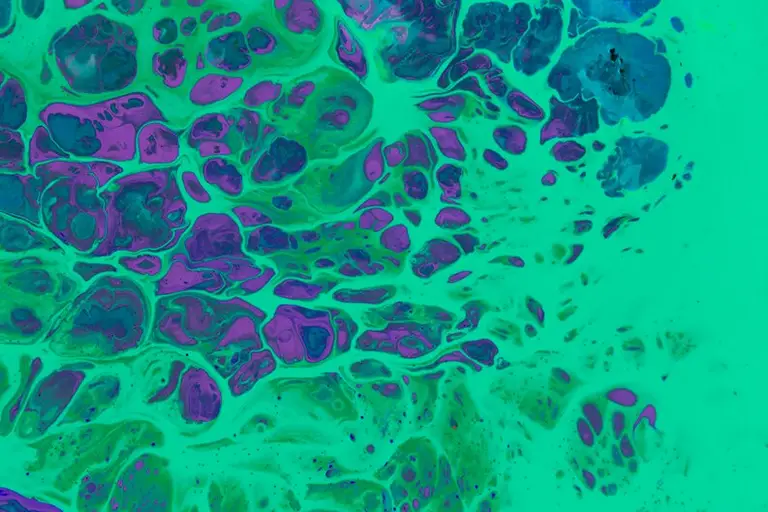Understanding the Threat and Ensuring Public Safety
Introduction

Naegleria fowleri, a free-living amoeba found in warm freshwater environments, Naegleria Fowleri In Pakistan has raised concerns due to its potential health risks. This article aims to provide a comprehensive understanding of Naegleria fowleri, its impact on human health, and measures to ensure public safety. We will explore the transmission, symptoms, prevention, available treatment options, recovery process, and emphasize the importance of early diagnosis in Naegleria fowleri infections in Pakistan.
1. What is Naegleria fowleri?
Naegleria fowleri is a single-celled amoeba commonly found in warm freshwater bodies, such as lakes, rivers, and hot springs. It can cause a severe infection known as primary amebic meningoencephalitis (PAM) when it enters the human body through the nose.
2. Transmission of Naegleria fowleri
Naegleria fowleri infections primarily occur when contaminated water enters the nasal passages. Activities like swimming, diving, or using contaminated water for nasal irrigation can expose individuals to the amoeba. It does not spread through drinking water or by swallowing contaminated water.
3. Symptoms of Naegleria fowleri infection
Once Naegleria fowleri enters the nasal passages, it can travel to the brain and cause PAM. Early symptoms may resemble those of common viral illnesses, including fever, headache, and nausea. As the infection progresses, individuals may experience a stiff neck, seizures, hallucinations, and coma. Unfortunately, PAM has a high fatality rate, with only a few reported cases of survival.
4. Prevention and Safety Measures
To prevent Naegleria fowleri infections, it is crucial to take certain precautions:
- Avoid activities in warm freshwater bodies, especially during periods of high water temperature.
- Use nose clips or hold your nose shut when participating in water-related activities.
- Ensure swimming pools and recreational water facilities are adequately chlorinated.
- Follow guidelines for proper maintenance and cleaning of swimming pools, hot tubs, and water storage tanks.
- Educate communities about the risks and preventive measures through public awareness campaigns.
5. Treatment of Naegleria fowleri infection
Prompt diagnosis and treatment are critical in managing Naegleria fowleri infections. Upon suspicion of infection, immediate medical attention should be sought. Treatment options may include:
- Antifungal Medications: Certain antifungal medications, such as amphotericin B, are used to target Naegleria fowleri and inhibit its growth. These medications are administered intravenously and require close monitoring by healthcare professionals.
- Supportive Therapies: In addition to antifungal medications, supportive therapies are essential to alleviate symptoms and provide necessary care. These may include the administration of analgesics for pain relief, anticonvulsants to manage seizures, and intravenous fluids to maintain hydration.
6. Recovery Process and Supportive Care
Recovery from Naegleria fowleri infection depends on various factors, including the individual’s overall health, the severity of the infection, and promptness of treatment. Due to the aggressive nature of PAM, the chances of survival are unfortunately low.
During the recovery process, patients require intensive medical care and support. This involves close monitoring of vital signs, neurological assessments, and regular laboratory tests to assess the effectiveness of treatment. Supportive care focuses on managing symptoms, providing pain relief, preventing complications, and maintaining the patient’s general well-being.
Psychological support is also essential for patients and their families, as the impact of Naegleria fowleri infection can be emotionally challenging. Counseling services and support groups can play a vital role in helping individuals cope with the aftermath of the infection and its potential consequences.

7. Public Awareness and Education
Raising awareness about Naegleria fowleri and its associated risks is essential for public safety. Government agencies, healthcare professionals, and NGOs should collaborate to educate communities through targeted campaigns, school programs, and public service announcements. Emphasizing preventive measures, early recognition of symptoms, and the importance of seeking immediate medical attention can help save lives.
8. Government Initiatives and Regulations
The government plays a vital role in addressing the threat of Naegleria fowleri. It should establish comprehensive guidelines and regulations for water quality monitoring and ensure their enforcement. Regular inspections of water supply systems, including reservoirs and treatment plants, should be conducted to minimize the risk of contamination.
9. Water Supply Management
Efficient management of water supply systems is crucial in preventing Naegleria fowleri infections. Implementing advanced filtration and disinfection techniques can help eliminate or reduce the presence of the amoeba in water sources. Regular monitoring and testing of water quality, especially in high-risk areas, should be conducted to detect any potential contamination.
10. Research and Development
Investing in research and development is essential to develop improved detection methods, treatment options, preventive measures, and potential vaccines against Naegleria fowleri infections. Collaboration between research institutions, healthcare professionals, and government agencies can accelerate progress in this area.
11. Challenges and Future Outlook
The battle against Naegleria fowleri in Pakistan faces several challenges, including limited resources, inadequate water infrastructure, and lack of public awareness. Overcoming these challenges requires a multi-faceted approach involving continuous research, robust governance, and active community participation. By addressing these issues, Pakistan can enhance public safety and mitigate the threat posed by Naegleria fowleri.
Recent Incident in Karachi
Details of the Incident
On 18th June 2023, an individual in Karachi fell victim to the brain-eating amoeba. He Lost his life on July 06 The incident occurred in Karachi, where the contaminated water source has been identified. Local health authorities were notified immediately, and efforts were made to trace the origin of the amoeba and prevent further infections.
Response and Precautionary Measures
Following the incident, the local health department swiftly responded by issuing public health advisories and conducting extensive water testing in the affected area. As a precautionary measure, residents were advised to refrain from swimming in potentially contaminated waters and to use nose clips or hold their noses shut during activities involving water contact.
Remember: Naegleria Fowleri In Pakistan
Naegleria fowleri is a serious health concern in Pakistan, requiring immediate attention and action. By raising public awareness, implementing preventive measures, investing in research and infrastructure, and emphasizing the importance of early diagnosis and treatment, we can minimize the risks associated with this deadly amoeba. It is crucial for individuals, communities, and the government to work together to ensure the safety of water sources and protect the well-being of the population.
FAQs: Naegleria Fowleri In Pakistan
Is Naegleria fowleri infection common in Pakistan?
While the overall incidence is relatively low, Pakistan has reported cases of Naegleria fowleri infection in the past.
Can Naegleria fowleri be transmitted through drinking water?
No, Naegleria fowleri does not spread through drinking contaminated water. It enters the body through the nosewhen water enters the nasal passages.
What are the early symptoms of Naegleria fowleri infection?
Early symptoms may include fever, headache, and nausea, which can be mistaken for common viral illnesses.
Is there a vaccine available to prevent Naegleria fowleri infection?
Currently, there is no vaccine available to prevent Naegleria fowleri infection.
How can I protect myself from Naegleria fowleri?
Avoiding activities in warm freshwater bodies, using nose clips, and following proper water hygiene practices can help protect against Naegleria fowleri.
What is the recovery process for Naegleria fowleri infection?
The recovery process for Naegleria fowleri infection depends on several factors, including the individual’s overall health, the severity of the infection, and the timeliness of treatment. Due to the aggressive nature of the infection, the chances of survival are unfortunately low. Patients require intensive medical care and support during the recovery process, including close monitoring, symptom management, and psychological support.
Are there any specific supportive care measures for Naegleria fowleri infection?
Supportive care for Naegleria fowleri infection focuses on managing symptoms, providing pain relief, preventing complications, and maintaining the patient’s general well-being. It may include the administration of analgesics for pain relief, anticonvulsants to manage seizures, intravenous fluids to maintain hydration, and regular neurological assessments.
How important is early diagnosis in Naegleria fowleri infection?
Early diagnosis is crucial in managing Naegleria fowleri infection. Prompt recognition of symptoms and immediate medical attention can potentially improve the chances of successful treatment. Public awareness about the early signs and symptoms of the infection is vital to facilitate early diagnosis and intervention.
What role does public awareness play in preventing Naegleria fowleri infections?
Public awareness plays a critical role in preventing Naegleria fowleri infections. Educating communities about the risks, transmission, and preventive measures empowers individuals to make informed choices. Promoting awareness campaigns, school programs, and public service announcements can help disseminate essential information and encourage proactive measures to ensure public safety.
How can the government contribute to addressing Naegleria fowleri infections?
The government can contribute by establishing comprehensive guidelines and regulations for water quality monitoring, ensuring their enforcement, and conducting regular inspections of water supply systems. Additionally, investing in research and development, collaborating with relevant stakeholders, and allocating resources to address the challenges posed by Naegleria fowleri are essential for effective management and prevention.



